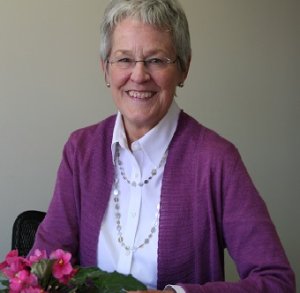Meet Katherine McCarter, NEON Board Member and ESA Executive Director
December 2, 2015
Katherine is the Executive Director of the Ecological Society of America (ESA); she has served in this leadership role since 1997. Over the last decade, Katherine has remained committed to supporting NEON: she joined the Board of Directors in January, 2011 and even served on the Consortium Design Committee during NEON’s inception.
What is your background? How does ESA inspire you?
I hold a Masters of Health Science in Environmental Health from the Johns Hopkins University so I’ve always had an interest in environmental science. While I’ve held management roles in government agencies and with various nonprofit associations for over 30 years, I am attracted to this role because of my leadership experience and interest in environmental sciences. Although I am not an ecologist, I am an administrator and able to provide a perspective which is valuable and necessary for an important organization like ESA to grow and thrive along with the dynamic field of ecology.
What particular aspects of the NEON project interest you the most?
Everything about NEON is exciting to me--particularly the potential for how continental-scale data generated from the Observatory will transform ecology. To be involved with NEON over time has been a privilege and a learning experience for me. We’re on the cusp of something very new and exciting that will greatly accelerate ecological research and I’m thrilled to be part of it.
How has the field of ecology changed during since you joined ESA?
Some of the primary changes are ones NEON can relate to—the field has become diverse and the research more interdisciplinary. The changing nature of the profession is reflected in the growth of ESA’s disciplinary related sections which now number 31 and the increasing number of multidisciplinary articles we publish in our journals. During the last five years, there has been an emphasis on the next generation of careers for ecologists. In response to this demand, ESA is no longer just geared toward those in academia. Also, the field of ecology has traditionally been predominantly male: that has changed substantially over the years with more women entering the field. Looking ahead, ESA understands that diversity is invaluable because it enables ecology to be relevant into the future.
What’s your proudest accomplishment during your tenure at ESA?
When I came to ESA, finances were a bit shaky. We were able to quickly turn the organization around and steer it to financial sustainability. This strong financial stability has provided opportunities to initiate new services and programs and focus on our mission to promote the field of ecological science. We’ve also launched several new publications during this time including “Frontiers in Ecology and the Environment,” “Ecosphere” and a new open access journal with the Ecological Society of China.
How will NEON help prepare ecologists to meet current and future challenges?
The availability of comparable and integrated data across time and space will give the field a huge boost: there will be so many opportunities to synthesize data and collaborate across disciplines. Ecologists should take full advantage of the opportunities NEON data will provide.
What do you feel the ecological community should know about NEON?
The community needs to understand the impact NEON will have on research and research funding: the data and infrastructure NEON will provide will greatly expand our understanding of the interactions between humans and their environment. This won’t diminish the need for other ecological research, but rather, provide opportunities to do new kinds of research using the tools NEON provides. In turn, policymakers can use findings to address pressing environmental challenges. It’s important that we collectively understand the world we live in and find ways to meet future challenges.


